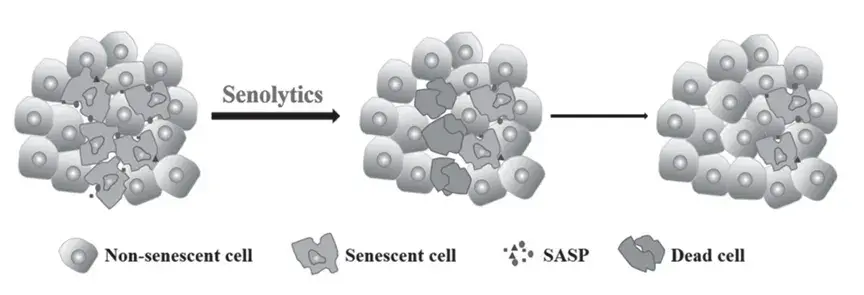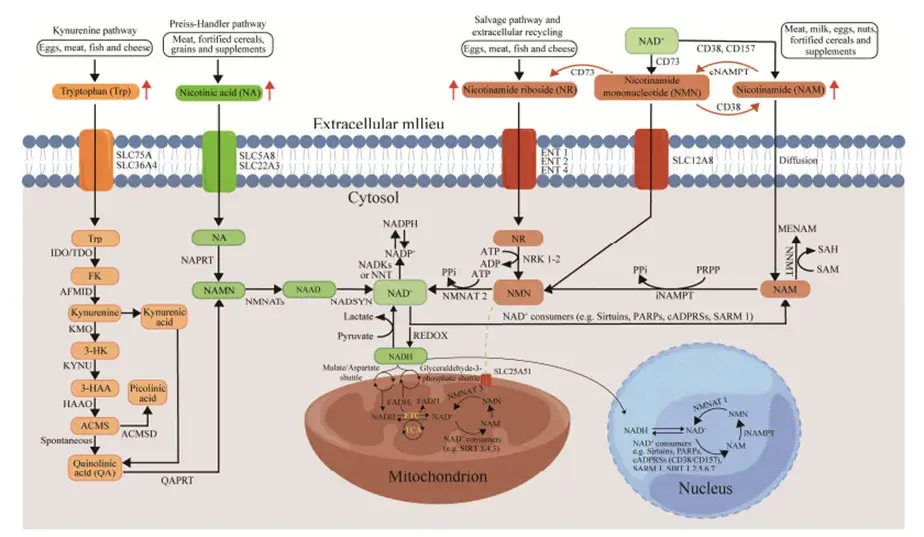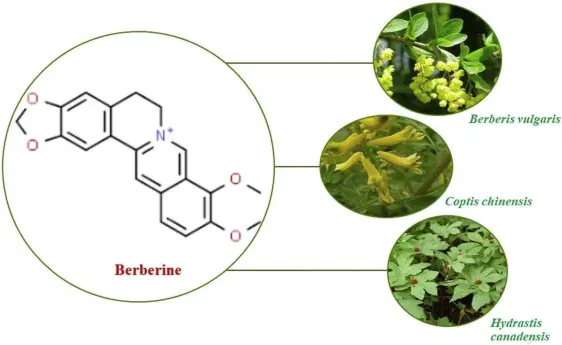Senolytics: Fisetin, NMN, PQQ, and Other Compounds Revolutionizing Anti-Aging

Figure: Senolytics selectively kill senescent cells
Key Senolytic Compounds
1. Dasatinib and Quercetin
A pioneering combination, dasatinib (a tyrosine kinase inhibitor) and quercetin (a natural flavonoid) selectively induce apoptosis in senescent fat and endothelial cells, effectively reducing inflammation and promoting tissue health.
2. Fisetin
Found in various fruits and vegetables, fisetin is a powerful antioxidant and anti-inflammatory agent. It enhances apoptotic pathways, clears senescent cells, and supports tissue repair.
3. NMN (Nicotinamide Mononucleotide)
A precursor to NAD+, NMN boosts cellular energy, improves mitochondrial function, and facilitates DNA repair, making it critical for metabolic health and aging intervention.
4. PQQ (Pyrroloquinoline Quinone)
This vitamin-like compound promotes mitochondrial biogenesis and offers strong antioxidant protection. PQQ enhances brain health, cardiovascular function, and cellular repair.
5. ABT-263 (Navitoclax)
A Bcl-2 family inhibitor, ABT-263 triggers apoptosis in senescent fibroblasts. While effective, its clinical use is limited by side effects like thrombocytopenia.
6. EF24
A curcumin derivative, EF24 demonstrates broad senolytic activity by inhibiting NF-κB and ROS pathways. It also shows potential in treating cancers and aging-related conditions.
7. EGCG (Epigallocatechin Gallate)
Extracted from green tea, EGCG combats oxidative stress, reduces cellular senescence, and improves metabolic and cardiovascular health.











